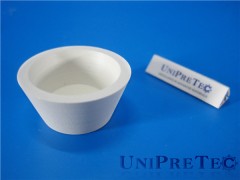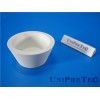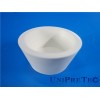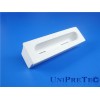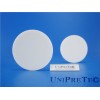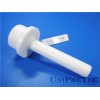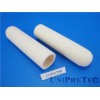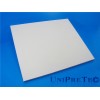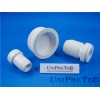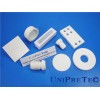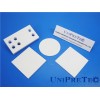Boron Nitride is an advanced technical ceramic material available in powder, liquid, solid, and aerosol spray forms. In its solid form, it is a chalky material with a microstructure very similar to that of graphite, causing it to sometimes be referred to as “white graphite”. However, unlike graphite, BN is an excellent electrical insulator and does not require humidity to act as a lubricant.
Boron Nitride generally has poor mechanical properties, however, it generally has very high temperature heat capacity, excellent thermal conductivity, outstanding dielectric strength and easy machinability. In reducing and inert atmospheres, Boron Nitride is able to withstand temperatures in excess of 2,000°C, however, in an air atmosphere it cannot be used above 750°C. In solid form, Boron Nitride can be easily machined to very tight tolerances in almost any shape. After machining, it can be used without extra heat treatment or firing operations. BN comes in a variety of different grades in solid and powder form, all with slightly differing properties. However, all BN ceramics offer outstanding thermal properties and machinability.
Boron Nitride Properties:
- Excellent thermal shock resistance
- High electrical resistivity
- Low density
- High thermal conductivity
- Isotropic (thermal conductance is different in different planes)
- Corrosion resistant
- Good chemical inertness
- High temperature material
- Excellent lubricating properties – low coefficient of friction
- Non-wetting (without oxidization)
- High dielectric breakdown strength
- Excellent Machinability
Boron Nitride Applications:
- Break rings for continuous casting of metals
- Refractory applications
- Continuous casting
- Deck plates
- Heat treatment fixtures
- High temperature lubricant
- High temperature valves
- Molds/mold release agent
- Motel metals and glass casting
- Nozzles for transfer or atomization
- Laser Nozzles
- Nuclear Shielding
- Induction heating coil supports
- Spacers
- High-temperature & high-voltage electrical insulators
- Vacuum furnace supports which require electrical resistivity
- Crucibles and containers for high purity molten metals
- Radar components and antenna windows

